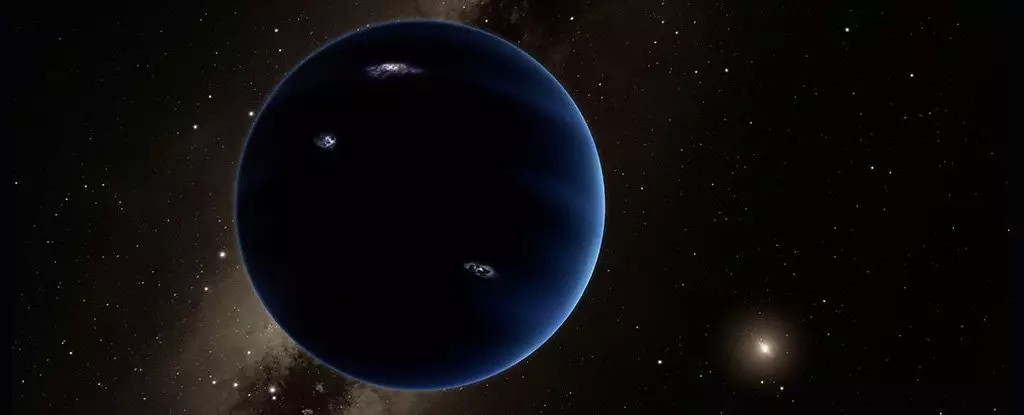The quest for Planet Nine continues, and yet it remains frustratingly out of reach. This enigmatic hypothetical planet, said to be lurking beyond the orbit of Pluto, has managed to evade all efforts to unveil its existence. It is no wonder why this proves to be a daunting task, considering the pitch darkness, extreme cold, and vast distance that characterize its elusive nature. Compounded by the fact that we possess only faint clues regarding its location, the challenge becomes even more formidable. There are a myriad of reasons contributing to our difficulties. Perhaps we simply have not spotted it yet, or maybe, just maybe, it does not exist at all. It is also plausible that what we perceive as evidence of a planet is instead a sign that our current understanding of gravity, as described under general relativity, is incomplete.
Physicists Katherine Brown of Hamilton College and Harsh Mathur of Case Western Reserve University have conducted new research shedding light on a potential alternative explanation. Their study suggests that the subtle irregularities observed in the orbits of various celestial objects, which some attribute to the presence of a hidden planet, may also align with a different gravitational model known as Modified Newtonian Dynamics (MOND). While Newton’s laws are undeniably valuable, they are not without flaws, shortcomings resolved by Einstein’s theory of general relativity. MOND, on the other hand, proposes that alternative gravitational effects come into play when Newtonian gravitational acceleration falls below a certain threshold. MOND’s attractiveness stems from its ability to explain gravitational behavior in galaxies that cannot be accounted for by normal matter, such as unexpected rotation curves and lensing effects, thereby offering an appealing alternative to the concept of dark matter. However, the behavior of MOND on smaller scales remains relatively unexplored.
Mathur comments, “MOND is really good at explaining galactic-scale observations. I hadn’t expected that it would have noticeable effects on the outer Solar System.” The existence of Planet Nine has been inferred based on peculiar orbital clustering observed in the outer reaches of our Solar System. This region is teeming with numerous small icy rocks that follow large, circumstellar paths. The intriguing manner in which some of these rocks cluster together within their orbits hints at the possibility of their gravitational herding by a substantial planet. Brown and Mathur were initially skeptical of MOND’s compatibility with these clustering observations. Thus, they embarked on an investigation, modeling the behavior of Kuiper Belt objects within the outer Solar System under MOND. Astonishingly, their simulations resulted in the reproduction of the observed clustering patterns. According to their calculations, MOND predicts that some objects in the outer Solar System should gradually align themselves with the gravitational field of the Milky Way galaxy over time. However, the available data is insufficient to confidently assert whether MOND or a planet is responsible for the peculiar behavior. Therefore, dynamical simulations are indispensable for a more detailed exploration of the MOND hypothesis, which can either solidify its validity or dismiss it altogether.
The quest for Planet Nine is far from over. While the MOND hypothesis adds an intriguing possibility to the spectrum of explanations for the peculiar orbital behavior observed in the outer Solar System, it cannot be definitively concluded without further analysis. Deepening the probe into MOND through dynamical simulations presents an avenue for advancing our understanding of the outer reaches of our cosmic neighborhood. Whether we ultimately unveil the enigma of Planet Nine or discover a paradigm-shifting truth about the nature of gravity, our relentless pursuit of knowledge continues to push the boundaries of our cosmic comprehension. As we navigate the mysteries of the universe, we must embrace curiosity, critical thinking, and an unwavering commitment to the pursuit of truth.



Leave a Reply